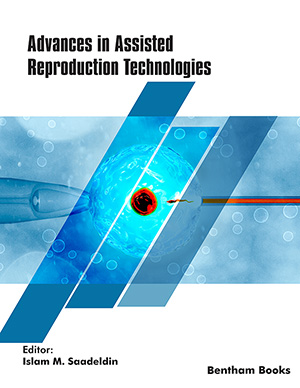Abstract
Background: Oral Squamous Cell Carcinoma (OSCC) is a major sub-type of oral cancer that shares 90% proportion of oral cavity cancers. It is declared as the sixth most frequent cancer among all cancer types throughout the world. Higher morbidity in Asian countries is reported due to frequent use of Smokeless Tobacco (SLT) products besides exposure to other risk factors. Hyperactivation of epidermal growth factor receptors is a molecular event in many solid tumors including oral cancer making them potential therapeutic targets.
Objective: Current study was designed to explore the effect of varlitinib, a pan-HER inhibitor, on oral cancer cell line. We investigated key regulatory genes in downstream pathway in response to drug treatment. Furthermore, we also examined expression profile of these genes in malignant and healthy oral tissue. Methods: Gene expression pattern in drug treated and untreated cancer cell line along with OSCC tumor samples (n=45) and adjacent normal tissues was studied using real time PCR. Results: In response to varlitinib treatment, significant suppression of oncogenes (IGF1R, MAPK1, SFN and CDK2) was observed. Interestingly, mRNA expression level of CDKN1A and Akt1 was found to be the opposite of what was expected. In case of malignant tissue, over expression of oncogenes (IGF1R, Akt1, MAPK1, SFN and CDK2) with simultaneous down expression of tumor suppressor genes (Tp53 and CDKN1A) was noted. STRING analysis indicated a strong association among differentially expressed genes suggesting their combined role in carcinogenesis. Conclusion: In summary, our results indicate that varlitinib can be considered as a potential therapeutic agent in oral cancer due to its antitumor potential.Keywords: Oral carcinoma, signal transduction, EGFR pathway, SCC-25 OSCC cell lines, Varlitinib, tobacco.
[http://dx.doi.org/10.1038/nrc2982] [PMID: 21160525]
[http://dx.doi.org/10.1371/journal.pone.0023452] [PMID: 21853135]
[http://dx.doi.org/10.1016/0140-6736(93)92119-E] [PMID: 7901471]
[http://dx.doi.org/10.1158/1055-9965.EPI-08-0347] [PMID: 19190158]
[http://dx.doi.org/10.1111/j.1600-0714.2009.00754.x] [PMID: 19434816]
[http://dx.doi.org/10.1177/0960327108098333] [PMID: 19734273]
[http://dx.doi.org/10.3892/ijo.21.4.763] [PMID: 12239614]
[http://dx.doi.org/10.1002/(SICI)1097-0347(200001)22:1<34: AID-HED6>3.0.CO;2-3] [PMID: 10585603]
[http://dx.doi.org/10.1016/j.oraloncology.2008.05.017] [PMID: 18674952]
[http://dx.doi.org/10.1016/S0140-6736(00)90011-4] [PMID: 10768432]
[http://dx.doi.org/10.1124/jpet.105.084145] [PMID: 16002463]
[http://dx.doi.org/10.1016/j.oraloncology.2008.06.002] [PMID: 18804401]
[http://dx.doi.org/10.1002/hed.21365] [PMID: 20848399]
[http://dx.doi.org/10.1517/14728222.2011.648617] [PMID: 22239438]
[http://dx.doi.org/10.1007/s00018-008-7440-8] [PMID: 18259690]
[http://dx.doi.org/10.1177/10454411960070040201] [PMID: 8986394]
[http://dx.doi.org/10.1677/erc.0.0080003] [PMID: 11350723]
[PMID: 18997665]
[http://dx.doi.org/10.1634/theoncologist.8-6-576]
[http://dx.doi.org/10.1038/nrc1609] [PMID: 15864276]
[http://dx.doi.org/10.1634/theoncologist.9-1-58] [PMID: 14755015]
[http://dx.doi.org/10.3389/fonc.2015.00002] [PMID: 25674538]
[http://dx.doi.org/10.1053/j.seminoncol.2008.03.008] [PMID: 18544443]
[PMID: 25951678]
[PMID: 23203871]
[http://dx.doi.org/10.1002/ardp.201300158] [PMID: 23873839]
[http://dx.doi.org/10.1021/jm050232e] [PMID: 16509571]
[http://dx.doi.org/10.1016/S0031-9422(03)00205-X] [PMID: 12943784]
[http://dx.doi.org/10.3390/cancers11010105] [PMID: 30658422]
[http://dx.doi.org/10.1371/journal.pone.0161158] [PMID: 27532210]
[PMID: 11782378]
[http://dx.doi.org/10.1200/JCO.2009.27.5040] [PMID: 20975071]
[http://dx.doi.org/10.1080/13813450902783106] [PMID: 19485702]
[http://dx.doi.org/10.1038/358015a0] [PMID: 1614522]
[http://dx.doi.org/10.1126/science.1905840] [PMID: 1905840]
[http://dx.doi.org/10.1172/JCI59889] [PMID: 22833868]
[http://dx.doi.org/10.3389/fonc.2016.00159] [PMID: 27446805]
[PMID: 7553623]
[http://dx.doi.org/10.1128/MCB.25.6.2419-2430.2005] [PMID: 15743834]
[http://dx.doi.org/10.1371/journal.pone.0042246] [PMID: 22860097]
[http://dx.doi.org/10.3892/ijo.15.2.301] [PMID: 10402241]
[http://dx.doi.org/10.1038/sj.onc.1210540] [PMID: 17546054]
[http://dx.doi.org/10.1002/pmic.201000186] [PMID: 21598386]



























